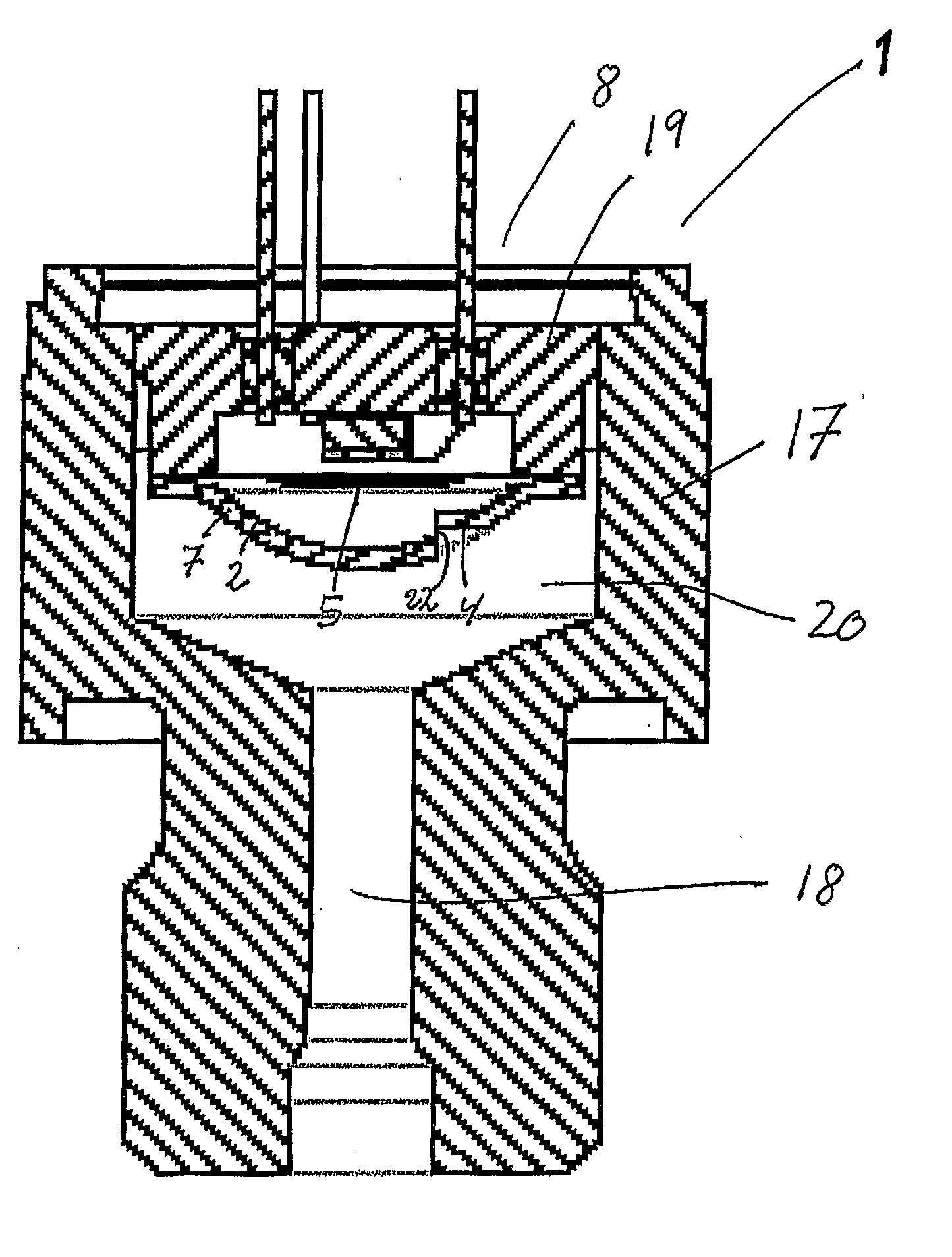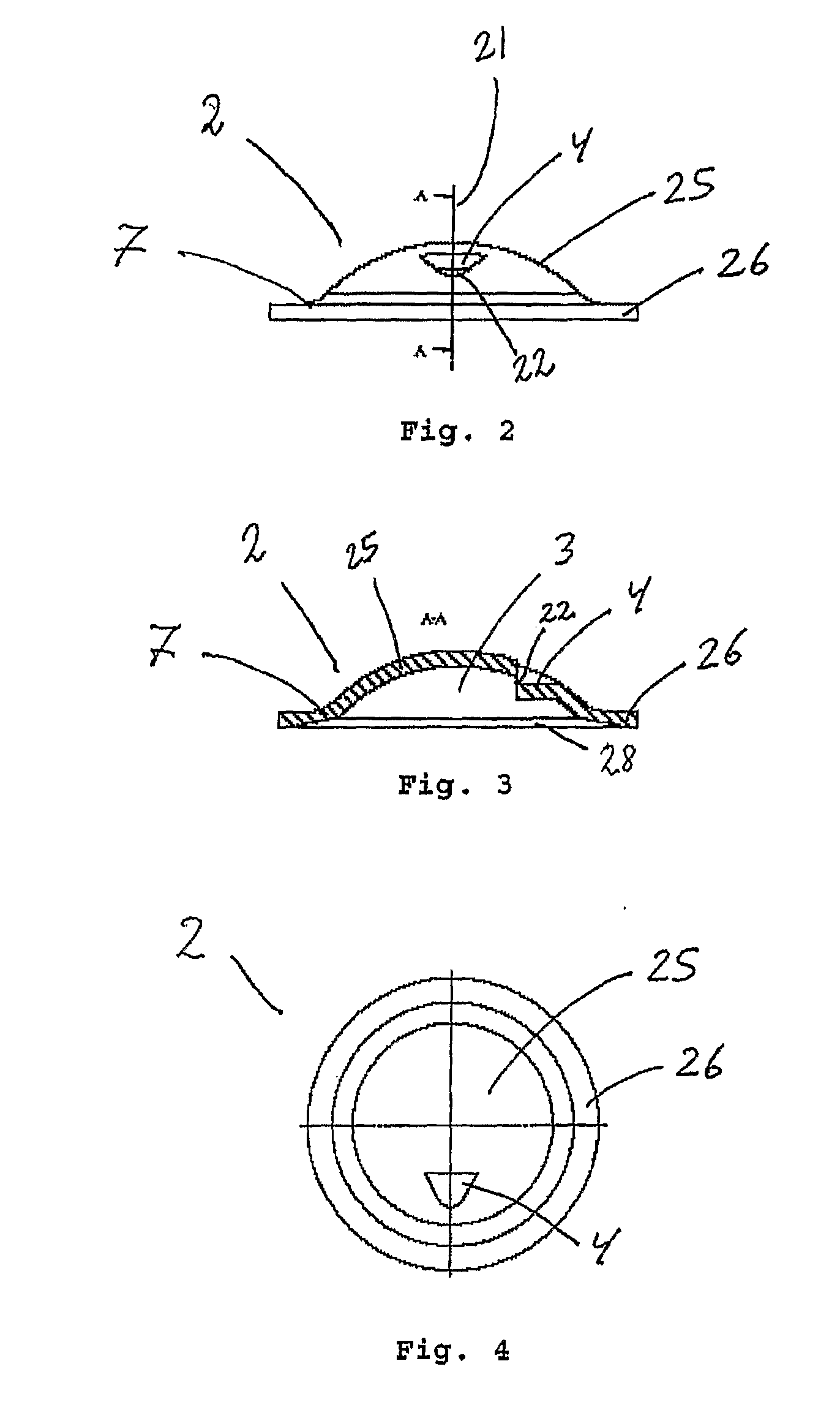Pressure sensor
a technology of pressure sensor and sealing diaphragm, which is applied in the direction of fluid pressure measurement by mechanical elements, instruments, measurement devices, etc., can solve the problems of huge pressure changes, damage to pressure sensors, and possible damage to sealing diaphragms or micromechanical elements covered by sealing diaphragms, etc., and achieves the effect of cheap manufacturing
- Summary
- Abstract
- Description
- Claims
- Application Information
AI Technical Summary
Benefits of technology
Problems solved by technology
Method used
Image
Examples
Embodiment Construction
[0033]FIG. 1 is a prior art pressure sensor 1 comprising a housing 17 with a fluid inlet channel 18 and a chamber 20. In the chamber is mounted a pressure element 8. The Pressure element 8 comprises a housing part 19 with a sensor element 16 and a sealing diaphragm 5. The sealing diaphragm 5 covers a recess 23 forming a cavity 9. The sensor element 16, comprising a support 10 and a silicon (Si) sensor 24, is placed in the cavity 9 fastened to the housing part 19 by an adhesive 27. The Si-sensor 24 has measuring diaphragm 6. The Si-sensor is connected to bond wires 12 and feed-through pins 13. The feed through pins are isolated by an isolation layer 15. The sealing diaphragm 5 is placed between the housing part 19 and a weld support element 7. The weld support element 7 is used to support the sealing diaphragm 5 during welding, because the sealing diaphragm 5 is to thin to be welded without support, the welding leaves a weld joint 14. A restriction element 2 is placed in the inlet ch...
PUM
 Login to View More
Login to View More Abstract
Description
Claims
Application Information
 Login to View More
Login to View More - R&D
- Intellectual Property
- Life Sciences
- Materials
- Tech Scout
- Unparalleled Data Quality
- Higher Quality Content
- 60% Fewer Hallucinations
Browse by: Latest US Patents, China's latest patents, Technical Efficacy Thesaurus, Application Domain, Technology Topic, Popular Technical Reports.
© 2025 PatSnap. All rights reserved.Legal|Privacy policy|Modern Slavery Act Transparency Statement|Sitemap|About US| Contact US: help@patsnap.com



